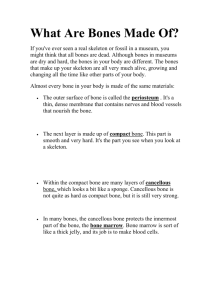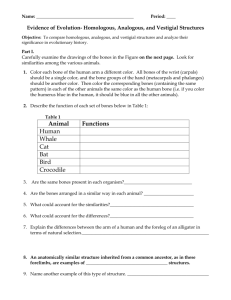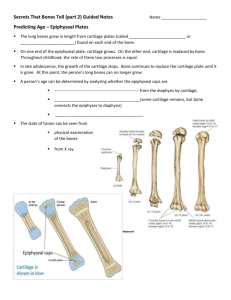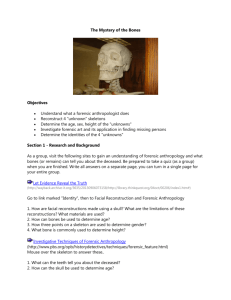Skeletal System Terms and Definitions
advertisement
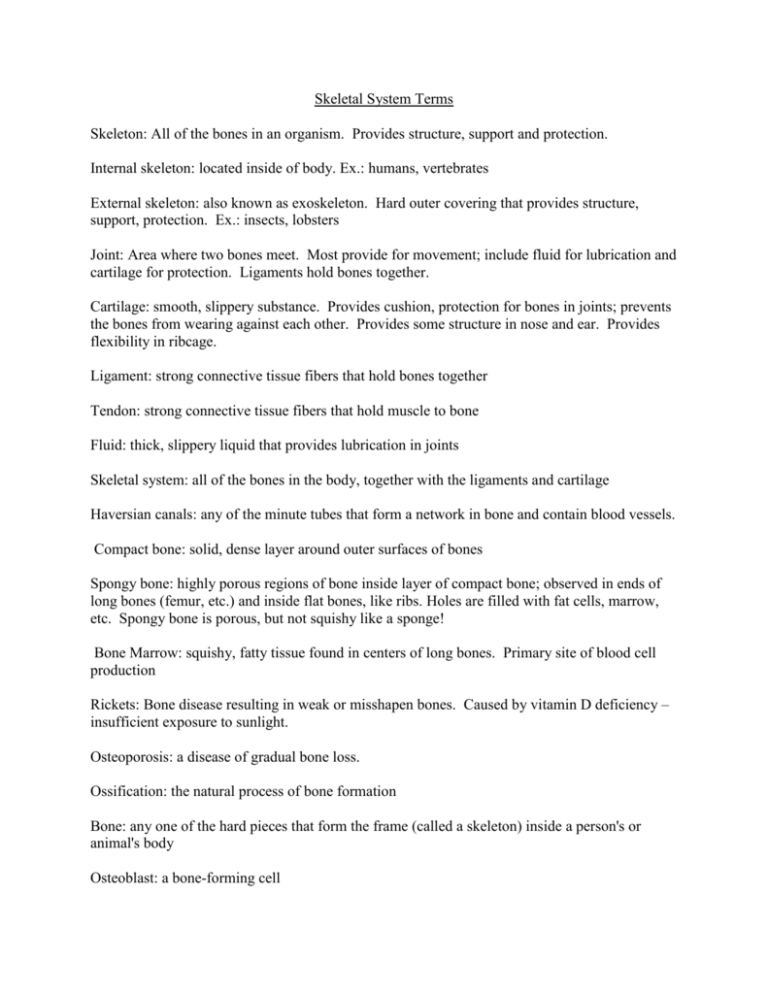
Skeletal System Terms Skeleton: All of the bones in an organism. Provides structure, support and protection. Internal skeleton: located inside of body. Ex.: humans, vertebrates External skeleton: also known as exoskeleton. Hard outer covering that provides structure, support, protection. Ex.: insects, lobsters Joint: Area where two bones meet. Most provide for movement; include fluid for lubrication and cartilage for protection. Ligaments hold bones together. Cartilage: smooth, slippery substance. Provides cushion, protection for bones in joints; prevents the bones from wearing against each other. Provides some structure in nose and ear. Provides flexibility in ribcage. Ligament: strong connective tissue fibers that hold bones together Tendon: strong connective tissue fibers that hold muscle to bone Fluid: thick, slippery liquid that provides lubrication in joints Skeletal system: all of the bones in the body, together with the ligaments and cartilage Haversian canals: any of the minute tubes that form a network in bone and contain blood vessels. Compact bone: solid, dense layer around outer surfaces of bones Spongy bone: highly porous regions of bone inside layer of compact bone; observed in ends of long bones (femur, etc.) and inside flat bones, like ribs. Holes are filled with fat cells, marrow, etc. Spongy bone is porous, but not squishy like a sponge! Bone Marrow: squishy, fatty tissue found in centers of long bones. Primary site of blood cell production Rickets: Bone disease resulting in weak or misshapen bones. Caused by vitamin D deficiency – insufficient exposure to sunlight. Osteoporosis: a disease of gradual bone loss. Ossification: the natural process of bone formation Bone: any one of the hard pieces that form the frame (called a skeleton) inside a person's or animal's body Osteoblast: a bone-forming cell








